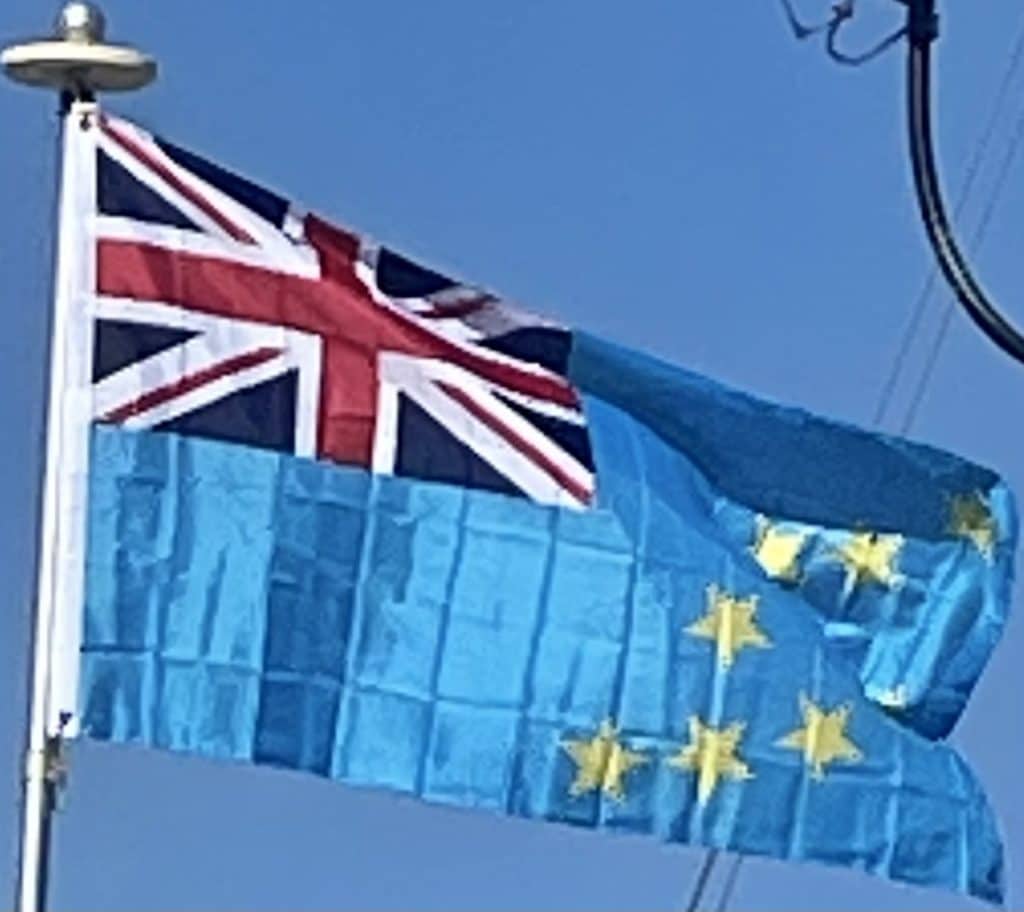

Tuvalu
In 1894, Count Rudolf Festetics de Tolna, his wife Eila (née Haggin) and her daughter Blanche Haggin visited Funafuti aboard the yacht Le Tolna. The Count spent several days photographing men and woman on Funafuti.
The boreholes on Funafuti, at the site now called Darwin’s Drill, are the result of drilling conducted by the Royal Society of London for the purpose of investigating the formation of coral reefs to determine whether traces of shallow water organisms could be found at depth in the coral of Pacific atolls. This investigation followed the work on The Structure and Distribution of Coral Reefs conducted by Charles Darwin in the Pacific. Drilling occurred in 1896, 1897 and 1898. Professor Edgeworth David of the University of Sydney was a member of the 1896 “Funafuti Coral Reef Boring Expedition of the Royal Society”, under Professor William Sollas and led the expedition in 1897. Photographers on these trips recorded people, communities, and scenes at Funafuti.
Charles Hedley, a naturalist at the Australian Museum, accompanied the 1896 expedition, and during his stay on Funafuti he collected invertebrate and ethnological objects. The descriptions of these were published in Memoir III of the Australian Museum Sydney between 1896 and 1900. Hedley also wrote the General Account of the Atoll of Funafuti, The Ethnology of Funafuti, and The Mollusca of Funafuti. Edgar Waite was also part of the 1896 expedition and published The mammals, reptiles, and fishes of Funafuti. William Rainbow described the spiders and insects collected at Funafuti in The insect fauna of Funafuti.
Harry Clifford Fassett, captain’s clerk and photographer, recorded people, communities and scenes at Funafuti in 1900 during a visit of USFC Albatross when the United States Fish Commission was investigating the formation of coral reefs on Pacific atolls.
Colonial Administration:
During the Second World War, Ellice Islands were informally aligned with the Allies. Early in the war, the Japanese invaded and occupied Makin, Tarawa and other islands in what is now Kiribati.
The United States Marine Corps landed on Funafuti on 2 October 1942 and on Nanumea and Nukufetau in August 1943. Funafuti was used as a base to prepare for the subsequent seaborne attacks on the Gilbert Islands (Kiribati) that were occupied by Japanese forces.
The islanders assisted the American forces building airfields on Funafuti, Nanumea and Nukufetau and to unload supplies from ships. On Funafuti, the islanders shifted to the smaller islets so as to allow the American forces to build the airfield and to build naval bases and port facilities on Fongafale. A Naval Construction Battalion (Seabees) built a seaplane ramp on the lagoon side of Fongafale islet, for seaplane operations by both short- and long-range seaplanes, and a compacted coral runway was also constructed on Fongafale, with runways also constructed to create Nanumea Airfield and Nukufetau Airfield. USN Patrol Torpedo Boats (PTs) were based at Funafuti from 2 November 1942 to 11 May 1944.

